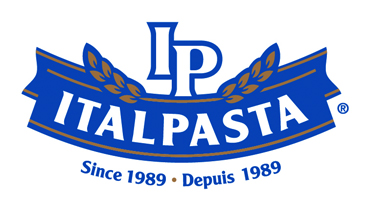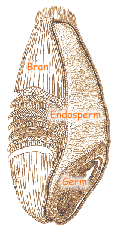NUTRITIONAL FACTS
|
For years, these foods were considered the ugly ducklings of nutrition. Thought to be fattening with little nutritional value, they were avoided in misguided attempts to control weight. Now scientific agreement among qualified nutrition experts points to increasing our consumption of grains based foods and reaping significant health benefits. For example, a standard serving of cooked pasta (125 mL - ½ cup) contains a mere 99 calories, less than have a gram of fat and less than 5 milligrams of sodium. Pasta is high in complex carbohydrates and provides a "time release" of energy. Healthy Servings - Fitting pasta into your daily diet Pasta Basics - A kernel of durum wheat Health Information Glossary Folic Acid A Grain of Truth - Avoiding myths and the food fad grab-bag |
|||||||||||
| - - - - - - - - - - - - - - - - - - - - - - - - - - - - - - - - - - - - - - - - - - - - - - - - - - - - - - - - - - - - - - - - - - - - - - - - - - - | |||||||||||
 |
|||||||||||
These guidelines suggest 5-12 servings of pasta and other grain products as excellent food choices that will contribute towards a healthy and well-balanced diet. Young children chan choose the lower number of servings, while male teenagers can go to the higher number. Most other people can choose servings somewhere in between. The real question for everyone is "how big is a serving"? One of the challenges to following the Food Guide is determining what makes up a serving. For example, if you eat a small plate of pasta (one cup), you might think that it is one serving of grain products. According to the Food Guide, however, it is two servings, since one serving of pasta equals half a cup. |
|||||||||||
|
|||||||||||
| - - - - - - - - - - - - - - - - - - - - - - - - - - - - - - - - - - - - - - - - - - - - - - - - - - - - - - - - - - - - - - - - - - - - - - - - - - - | |
Protect yourself from the food fad grab-bag of simplistic ideas that usually are based on minimal research but enjoy maximum media exposure. A coalition of food and nutrition scientists have identified diet and nutrition recommendations to avoid. Beware of any diet, food plan, product or service that has any of these dubious characteristics: |
|
- Dire warnings of dangers from a single product or regimen. - Claims that sound too good to be true. - Simplistic conclusions drawn from a complex study. - Recommendations based on a single study. - Dramatic statements that are refuted by reputable scientific organizations. - Lists of "good" and "bad" foods. - Recommendations made to help sell a product. - Recommendations based on studies published without being formally reviewed by others knowledgeable in the same field. - Recommendations from studies that ignore the differences among individuals or groups. (Source: Food & Nutrition Science Alliance, 1995) |
 |
| - - - - - - - - - - - - - - - - - - - - - - - - - - - - - - - - - - - - - - - - - - - - - - - - - - - - - - - - - - - - - - - - - - - - - - - - - - - | |
 Healthy Pasta
Healthy Pasta 100% Canadian Pasta
100% Canadian Pasta Canadian pasta makers
Canadian pasta makers pasta facts
pasta facts










